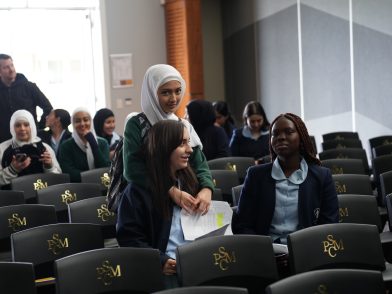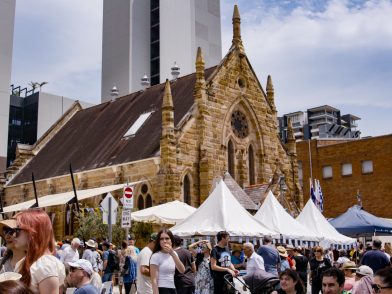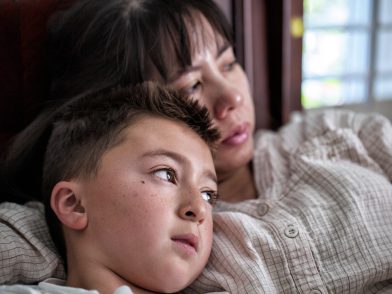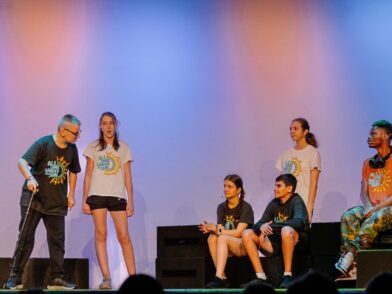Melanie Pitkin, Senior Curator of the Nicholson Collection at the University of Sydney’s Chau Chak Wing Museum, first visited Egypt in 2004.
She was immediately taken by its historical richness and the kindness of its people.
“I feel a strong affinity with Egypt and its people – it has, and always will be, a big part of my life”
With more than 15 years of experience working in museums in Australia and the United Kingdom, and providing support to colleagues at museums in Egypt, Melanie is immersed in the postcolonial debate about who gets to tell culturally significant stories.

With more than 15 years of experience working in museums in Australia and the United Kingdom, and providing support to colleagues at museums in Egypt, Melanie is immersed in the postcolonial debate about who gets to tell culturally significant stories.
“Historic and contemporary Egyptian voices and stories are largely missing from the museum experience. Collaborating with Heba Abd el Gawad and Professor Alice Stevenson of ‘Egypt’s Dispersed Heritage Project’ was an important starting point for our work.”
Melanie explained how she worked with Heba and her colleague, Professor Alice Stevenson, to develop better methods to allow representatives of cultural communities to contribute their own ideas about museum curation. The team has worked with Sydney’s Egyptian community through a series of roundtables, a survey, and conversation pieces for online news platform Egyptian Streets. Their work aims to foreground local Egyptian Australian voices and the community’s ideas about how Egyptian collections can best serve communities with Egyptian heritage. Their work also offers different perspectives and narratives, particularly Egyptian ones, for the benefit of all museum-going audiences.
Egyptian Australian community members suggested that modern Egyptian personalities and life, including food and language, should be more explicitly drawn out with reference to ancient Egypt, threading the past with the living present.
Kid Pharoah’s music video ‘Sand Monkey’ satirises the idea of performing cultural identity
The work of museum curation has been impacted by the debate about cultural representation in the arts. Recently, more Egyptian-themed film and TV content has aired on streaming platforms, such as Marvel’s Moon Knight starring Egyptian Palestinian actress May El Calamawy, and Ramy Youssef’s Hulu series Ramy which tells the story of an Egyptian American family living in New Jersey. The celebration of Egyptian culture is also taking place in the music industry.
Egyptian Australian musicians Moktar and Kid Pharaoh have made inroads into the rap and hip-hop industries over the past few years, mingling symbols, concepts and sounds from Egyptian culture with modern beats.
Moktar is a DJ and producer combining club and techno with traditional Arabic instrumentation, sampling and producing to emphasise his Egyptian Australian background.
Kid Pharaoh is a rapper whose Egyptian heritage informs his Australian brand of hip-hop. The video clip for Kid Pharaoh’s song British Museum has received over three million views on TikTok. The video portrays an older Egyptian man, an amu (uncle) type, sitting in a makeshift Egyptian family living room set up amongst Egyptian antiquities in a museum. Smoking a shisha pipe and spitting out dried pumpkin seeds, he berates the pushy museum curator for telling him that “he is not allowed to sit here.”
“The video itself and the song itself made me ask, how can I translate something that it is interesting to me in a way that I want to take on,”
The video was actually filmed in Sydney at the Nicholson Collection in the Chau Chak Wing Museum.
“Kid Pharaoh approached us, he shared some samples of his previous music and video clips,” curator Melanie told The New Point Magazine. “He asked us to use the venue. We were open and we let him use the museum as a platform to explore his ideas.”
In another clip called Sand Monkey, Kid Pharaoh dons a tarboosh and performs in a life-size glass box set up in an older white couple’s living room. The room is adorned with photos of the couple’s tour of the Egyptian pyramids, and when they insert a token into the glass box labelled ‘Token Boy’, Kid Pharaoh performs for them:
“Dance sand monkey dance…”
Speaking to The New Point Magazine, Kid Pharaoh, whose real name is Mina Albert, explained that a sense of heritage is important to him. He said he hoped the British Museum video made people think as well as laugh.
“The video itself and the song itself made me ask, how can I translate something that it is interesting to me in a way that I want to take on.”.
“The video itself and the song itself made me ask, how can I translate something that it is interesting to me in a way that I want to take on.”.
“I knew I was keen on telling this story. I knew I wasn’t keen on telling an on-the-nose documentary style but the scene with the amu (my uncle) is something that I find hilarious,” Kid Pharaoh said.
“After I laugh, people are going to share it around and start a conversation. I’m keen to talk about things that matter in a way that draws you in.”
Museum curator Melanie agrees.
“Kid Pharaoh’s music video offers a point of reflection and discussion, especially for young Egyptian Australians, encouraging them to think critically about how they identify with their dispersed heritage,” she said.
Egyptian representation in the media
“For the ABC episode Stuff the British Stole, myself and a friend [fellow Egyptian musician] Moktar, spoke with host Marc Fennel about a mummified boy called Young Horus and how it came to be here in Australia.”
“Though I’m not a historian, I think it’s great that he’s showcasing contemporary community voices, he’s not dismissing the effect that these stories have on young people like me. He’s a vehicle for Egyptian people to tell their story, he’s guiding them to tell their story.”
-Egyptian Australian musician Kid Pharaoh on the ABC series, Stuff the British Stole
“Something that I’m passionate about is connecting first, second and third generations with their cultural heritage,” she says.
Melanie and her team are working towards the same objective by connecting Egyptian Australians with the museum.
“Something that I’m passionate about is connecting first, second and third generations with their cultural heritage,” she says.
“Because Egyptians have been so disenfranchised from their past, this is a global discussion. We’re doing groundbreaking work here, it’s a bit scary, a delicate topic, it can’t be rushed but you’ve got to start somewhere.”
“I’m hoping that we’re setting a benchmark here.”






